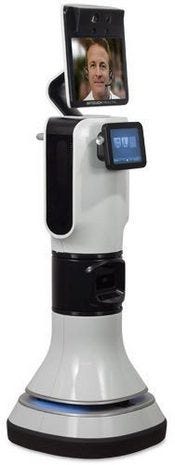As some organizations struggle to innovate in today's complex regulatory landscape, others forge ahead.


Remote Patient Monitoring: 9 Promising Technologies
Remote Patient Monitoring: 9 Promising Technologies(click image for larger view and for slideshow)
Technological innovation is why many CIOs decide to pursue a career in healthcare technology. But the question has shifted in recent years from what to innovate to how to innovate -- particularly in an environment dominated by regulatory standards.
Regulatory and financial pressures, combined with the ultimate goal of delivering quality care, can make it inherently tough to innovate.
There's a flipside, however.
"In healthcare, it's often the regulatory changes and constraints that create the opportunities," said Elliot Menschik, the managing director of DreamIT Health, a health IT startup accelerator. "Regulations often change how we behave. Healthcare is a heavily regulated industry, but the regulations can create a roadmap for new entrances into the market."
[ Should you roll your own? Read Why Hospitals Still Build Their Own Health IT. ]
InformationWeek Healthcare spoke with four industry leaders in innovation to explore how to successfully innovate in today's changing industry.
Foster A Culture Of Innovation
Utah-based Intermountain Healthcare, the largest healthcare provider in the intermountain west, has a longstanding tradition of innovative culture, said Fred Holston, Intermountain's CTO. If an organization puts emphasis on the value of innovation throughout the entire system, employees -- from nurses to doctors to IT pros -- are more likely to speak out about and push for innovative ideas. At Intermountain, physicians, nurses and caregivers across the board provide innovative input. Collaboration and inclusion are key to fostering an innovative culture.
Part of creating an innovative culture is asking the right questions: What does a good idea look like? What is the hypothesis? How do we test this? How do we know who the target is?
"Inventors need to know where to go and what to do to test the idea," said Todd Dunn, director of innovation at Intermountain. "It's a system like Six Sigma but completely different on the innovation side."
Intermountain's recent innovative successes include integrating emergency aircrafts' in-flight medical records into the emergency department's electronic health record (EHR). The medical records in the emergency aircrafts previously weren't charted. The information is not only transmitted to the EHR, but also incorporated into Intermountain's data analytics.
Provide An Innovative Space Separate From Day-To-Day Operations
Innovation is most often stunted by financial constraints and can be the first thing to go when a department is looking to cut corners. Developing a stand-alone innovative space can protect projects from these types of financial limitations.
"In that tough of an environment, you have to set it aside and have it somewhat protected," said Larry Stofko, executive VP of the Innovation Lab at the Innovation Institute. The Innovation Institute is a California-based organization that focuses solely on innovation. "Some people treat strategy and innovation as heavy luggage on a ship. When tough times come, those are the first things people throw overboard."
Enterprises and organizations like Intermountain's Healthcare Transformation Lab, The Innovation Institute and DreamIT have all taken this approach, and it's paid off. Intermountain launched its Healthcare Transformation Lab in August. The lab is devoted entirely to healthcare innovation. The lab is partnering with Intel, Dell and Sotera Wireless, among others, to develop the next iteration of healthcare technology.
"In the healthcare industry, our job is to take care of patients," Dunn said. "We're very focused on positive outcomes, and sometimes that doesn't leave as much room for thinking way outside the boxes."
The goal is for a lab devoted entirely to innovation to break that barrier.
California-based St. Joseph's Health took a similar approach, investing $40 million in the Innovation Institute, a for-profit institute comprised of an innovation lab, an enterprise development group and a growth fund. The institute is owned by seven nonprofit health systems. The lab is the innovation incubator where technology is created. The development group works with hospitals to increase revenue and the growth fund invests in emerging innovative companies.
"St. Joseph's set innovation outside of the organization to make sure it would be protected," Stofko said. "Innovation should be collaborative. It shouldn't be in a strategic planning or marketing department. We feel innovation is more powerful when shared among organizations."
DreamIT fosters innovation by creating a nurturing space for health tech startups. It's essentially a three-month boot camp for startups looking to get a foot in the door. Companies selected to participate are matched with a mentor, usually a successful healthcare entrepreneur. They receive free legal and accounting advice, and learn from a vigorous healthcare-tailored curriculum. The goal is to encourage risk-taking.
"It's hard being a startup in any industry, especially when selling into the enterprise as opposed to consumer-facing products," Menschik said. "You're dealing with large organizations that take a while to make a decision and purchase a product."
Healthcare companies are especially risk-averse, making it difficult for startups to break in. DreamIT partners with Independent Blue Cross Blue Shield and University of Pennsylvania Medicine to build a foundation for those corporate-startup relationships.
Stat, a startup that is developing on-demand non-emergency ambulatory transport, participated in the DreamIT program. It's similar to Uber, an on-demand taxi service app, but for medical transport. It's intended for patients being discharged from a hospital or for transport from a nursing home to a dialysis center. DreamIT not only provided Stat with the resources to build the software for Web and mobile apps, but also helped connect the company with customers in the Philadelphia market.
Assemble An Innovative Leadership Team
Forward-thinking leaders signify an organization's commitment to innovation.
"The leadership piece is very important," Stofko said. "It shows it's not just a pet project, but something the organization is willing to put some strong people on. It sends a message."
The Innovation Institute brought over the top leaders from St. Joseph's, including St. Joseph's former COO, CIO and senior VP.
About a year ago, Penn Medicine hired a chief innovation officer, Roy Rosin.
"Roy has brought in a spirit of innovative thinking across the enterprise," said Michael Restuccia, the VP and CIO at Penn Medicine. "It reinforces the concept of innovation."
Penn launched an organization-wide innovation competition called Your Big Idea, open to all employees. Employees submit their ideas for improvements in patient care, cost reductions and operational improvements. The winning ideas of 2012's competition supported an online scheduling system for physician visits and kiosk technology in ambulatory clinics to streamline registration and check-in.
"You have to have a balance," Restuccia said. "There has to be a percentage of innovative efforts to keep things moving forward and balanced with the run-and-maintain efforts. When you structure in that manner, you can remain compliant [with] audits and regulations."
About the Author(s)
You May Also Like







